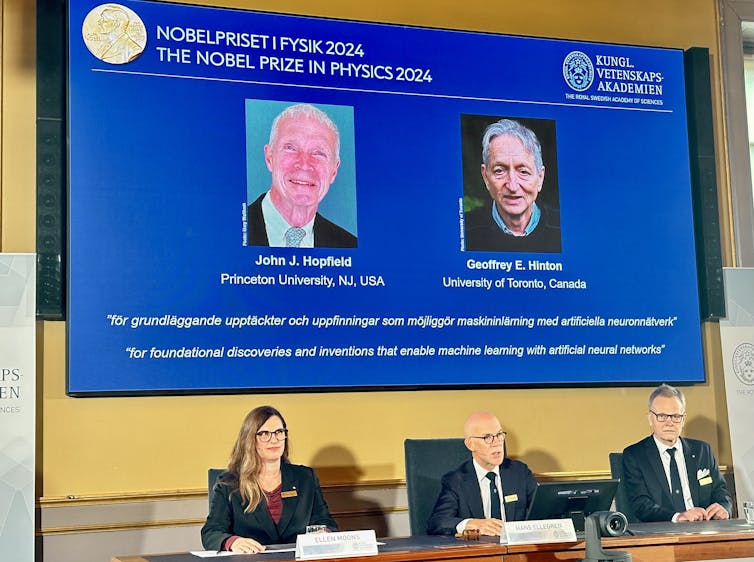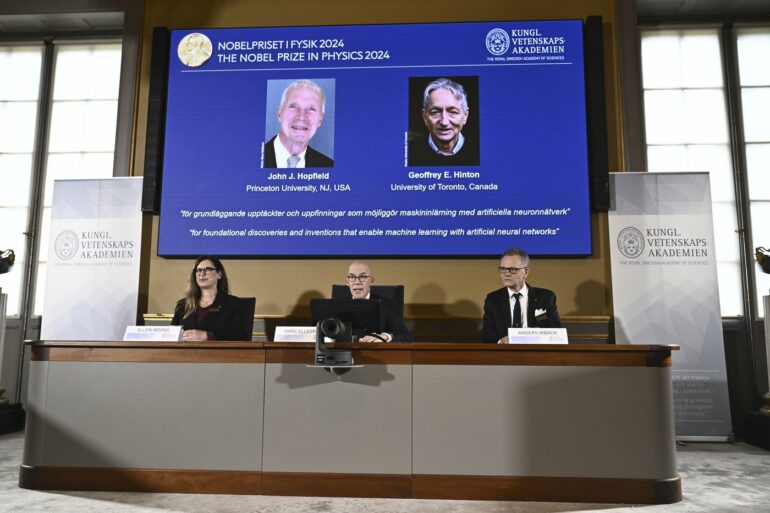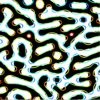If your jaw dropped as you watched the latest AI-generated video, your bank balance was saved from criminals by a fraud detection system, or your day was made a little easier because you were able to dictate a text message on the run, you have many scientists, mathematicians and engineers to thank.
But two names stand out for foundational contributions to the deep learning technology that makes those experiences possible: Princeton University physicist John Hopfield and University of Toronto computer scientist Geoffrey Hinton.
The two researchers were awarded the Nobel Prize in physics on Oct. 8, 2024, for their pioneering work in the field of artificial neural networks. Though artificial neural networks are modeled on biological neural networks, both researchers’ work drew on statistical physics, hence the prize in physics.

The Nobel committee announces the 2024 prize in physics.
Atila Altuntas/Anadolu via Getty Images
How a neuron computes
Artificial neural networks owe their origins to studies of biological neurons in living brains. In 1943, neurophysiologist Warren McCulloch and logician Walter Pitts proposed a simple model of how a neuron works. In the McCulloch-Pitts model, a neuron is connected to its neighboring neurons and can receive signals from them. It can then combine those signals to send signals to other neurons.
But there is a twist: It can weigh signals coming from different neighbors differently. Imagine that you are trying to decide whether to buy a new bestselling phone. You talk to your friends and ask them for their recommendations. A simple strategy is to collect all friend recommendations and decide to go along with whatever the majority says. For example, you ask three friends, Alice, Bob and Charlie, and they say yay, yay and nay, respectively. This leads you to a decision to buy the phone because you have two yays and one nay.
However, you might trust some friends more because they have in-depth knowledge of technical gadgets. So you might decide to give more weight to their recommendations. For example, if Charlie is very knowledgeable, you might count his nay three times and now your decision is to not buy the phone – two yays and three nays. If you’re unfortunate to have a friend whom you completely distrust in technical gadget matters, you might even assign them a negative weight. So their yay counts as a nay and their nay counts as a yay.
Once you’ve made your own decision about whether the new phone is a good choice, other friends can ask you for your recommendation. Similarly, in artificial and biological neural networks, neurons can aggregate signals from their neighbors and send a signal to other neurons. This capability leads to a key distinction: Is there a cycle in the network? For example, if I ask Alice, Bob and Charlie today, and tomorrow Alice asks me for my recommendation, then there is a cycle: from Alice to me, and from me back to…



